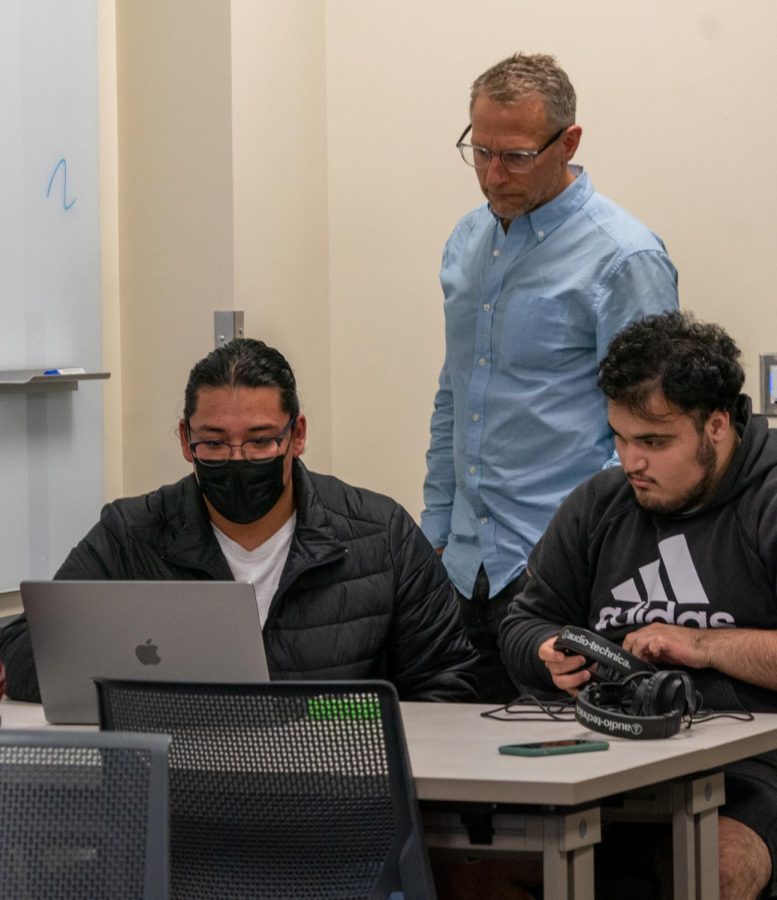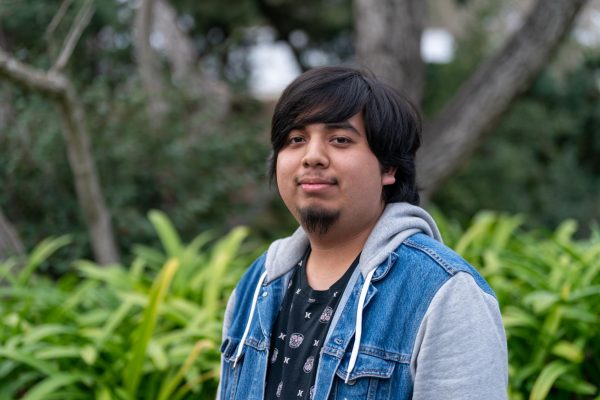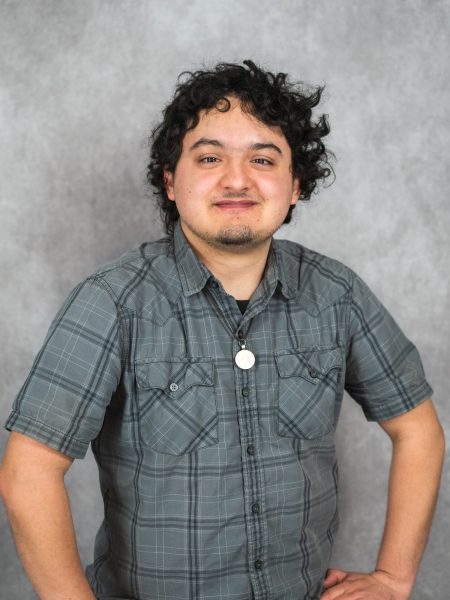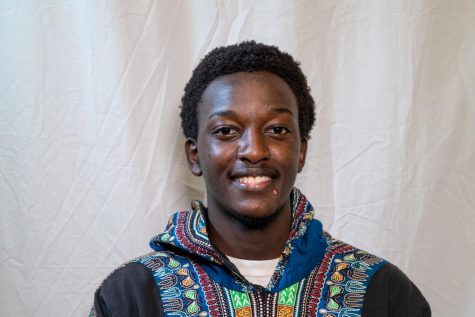SRJC digital filmmaking instructor Brian Antonson believes showing is better than telling.
To convey information to his students in a manner that better teaches them the concepts, Antonson “flipped” his classroom. In this style of instruction, normal classroom activities such as lectures and quizzes take place at home. Tasks normally done at home are instead done in class.
“I used to spend a lot of my class time explaining terms, definitions and technical things, and it was boring,” Antonson said. “So what I started doing, what I find works better, is I basically record myself doing what I would normally do in the classroom.”
Students watch the video recordings before attending class. This allows for their meetings to be more active. “Now my class time is spent engaging the material in more interactive ways. It’s not me in the front of the room talking and them taking notes,” Antonson said.
Antonson had slowly started to make this change before the pandemic, however, the pandemic expedited the shift.
Going from teaching in-person classes to Zoom or online-only was a jarring experience for most SRJC instructors as they struggled to adapt to new technologies while continuing to help students meet learning objectives. They were forced to reinvent their classrooms online, and for many, that included changing their teaching methods to meet the moment. While many instructors complain about the pitfalls of Zoom instruction, from their online struggles came creative methods and new ideas that have lasted post-pandemic.
Humanities instructor Rafael Vasquez had never taught online before he was forced to in 2020. In his humanities classes, Vasquez teaches the history of gangs, and the problems minorities face. Before the COVID-19 pandemic, he constantly interacted with the class, directly asking them questions based on the topic they were learning and making the occasional joke. But once the pandemic hit, and he was thrown into the online system, “like, literally, from one day to the next,” he said.
Switching from direct engagement to lectures and PowerPoints bothered him. “I don’t like lecturing; I like to interact with people,” he said.
Not only that, but he could also notice the pandemic hitting the students as well. He described how he could feel the difference in energy compared to the classroom, where everyone interacted with each other and had a dialogue.
“Switching to having small groups online and having them talk and then have somebody report, it wasn’t very healthy,” Vasquez said.
But he quickly realized that he had something that could help make the class more engaging: his time as a radio host. “When you’re on the radio, you have to learn how to get your audience to get a message that is not visual,” he said.
As soon as he applied this knowledge, the attention from the students rose. “The feedback that students gave at the end was that over time, they learned to capture the message in a non-visual way.”
He still uses these techniques during in-person class, and they have helped elevate his classes. “It has allowed me to also be comfortable being the only one talking in front of these audiences,” he said.
Despite most instructors disliking it, the sudden change to online instruction served as a positive and lasting learning moment for them.
Theatre Arts
Theater Arts instructor Leslie McCauley teaches all levels of acting, literature, history, multicultural classes and directs main stage plays.
“When COVID hit, we had just opened a show. We had to close that show,” she said.
She too, quickly realized she had to focus on enhancing student engagement. She found it vital to give attention to each student individually to prevent them from turning their screens off and making themselves “disappear.”
Now that theater classes are back in-person, the classroom environment is different. “There’s a high level of anxiety among students,” McCauley said. She found that she needs to emphasize teaching students how to move on stage and to spend more time generating trust between them.
Elizabeth Dale, also from the theater arts department, said she had to learn to be more specific with students. “I think I teach more carefully, and make sure students understand what I’m saying,” Dale said. “I’m not so theoretical. I balance it out with the practical.”
Music
Mark Anderman, who has taught music theory, musicianship and applied music since 1995, also made positive changes to his teaching as a result of the pandemic.
Anderman had been thinking of doing an online class and had used Canvas a bit more each semester. “The pandemic kinda kicked my butt to do it now,” he said. “It gave me the tools I needed to do my first fully online course.”
He also found that having students turn in their assignments online allowed for him to return their work in the same way, so they could look it over before class. “They’re ready for the new lesson, they’re ready for their test,” Anderman said. Although his classes are now back in person, Anderman still has students turn in work online.
Similarly, Jerome Fleg, who conducts the symphonic and jazz bands, was forced to use Canvas with a large group of students. “So much of what I do is with larger size classes, like a 60-person symphonic band, so organization becomes like the number one thing I do to make that group successful,” he said.
So he had to learn the system, understand how and where things could be put, what audio and video formats were allowed, and how to provide recordings so that students could hear themselves with their fellow band members.
He realized how useful it was to actually use Canvas, as it allowed students to easily access all that he posted. “More important than anything is just how you make sure people have equal access to anything they need, whether it’s rehearsal schedule or recordings to practice with,” he said.
Ethnic Studies
Native American studies instructor Lori Thomas also changed her approach to teaching. She realized her students were going through a difficult time and found she needed to become more compassionate. “I’m a lot more thoughtful and caring about their feelings, about the enormous amount of stress students are under,” she said.
Stress can affect the pace at which students want to engage with class content, which Antonson’s “flipped” classroom can accommodate for.
“They can listen at their own pace. They can multitask if needed,” he said of his pre-recorded lectures.
Describing it as “education on demand,” Antonson explained how students can listen to lectures as slow or fast as they need to gather information before taking the embedded quizzes and coming to the next class ready to apply what they had just learned.
“For me, teaching is about how you are going to convey the information for students to understand,” Antonson said. “There’s a difference between teaching and putting a slide on the screen.”







